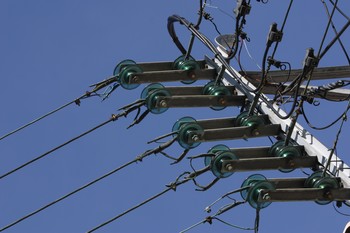Jun 3 2005
Children living close to high voltage overhead power lines at birth may be at an increased risk of leukaemia, finds a large study in this week's BMJ.

But the authors emphasise that these results may be due to chance and further research is needed to find out whether there really is a link.
About one child in 2000 develops leukaemia before the age of 15 years.
Although we don't yet understand its causes, researchers have studied a variety of possible explanations including genetic susceptibility, ionising radiation, unusual patterns of exposure to infection, and electromagnetic fields.
The electric power system produces extremely low frequency electric and magnetic fields, and since 1979 there has been concern that these fields may be associated with cancer. In 2001, the International Agency for Research on Cancer classified extremely low frequency magnetic fields as "possibly carcinogenic" while others, such as the UK Childhood Cancer Study, dispute the risk.
Over 29,000 children with cancer, including 9,700 with leukaemia, were included in the study, the largest of its kind to date. The children were aged 0-14 years and were born in England and Wales between 1962 and 1995. They were compared with a group of control children individually matched for sex, approximate date of birth, and birth registration district. The distance of each child's home address at birth from the nearest high voltage power line was calculated.
Children who lived within 200m of high voltage power lines at birth appeared to have a 70% raised risk of leukaemia compared with those who lived beyond 600m. There was also a slightly increased risk for those living 200-600m from the lines at birth.
To put these risks into perspective, about five of the 400-420 cases of childhood leukaemia that occur annually in England and Wales may be associated with power lines.
No excess risk was found for other childhood cancers.
The finding that the increased leukaemia risk extends so far from the line is surprising in view of the low average level of exposure to magnetic fields at these distances, say the authors. There is no accepted biological mechanism to explain these results; indeed, the relation may be due to chance or some other factor associated with living near power lines.
In an accompanying editorial, Heather Dickinson from the University of Newcastle upon Tyne agrees that, even if the effect is causal, it could account for only a tiny proportion of cases.
She says, "Magnetic fields from power lines are very weak – only about 1% of the earth's magnetic field which affects all of us all the time – so it would be surprising if they caused leukaemia. The increased risk closer to power lines may reflect some other factor that varies geographically." The study didn't measure the magnetic field from either the power lines or other sources.
"We don't yet fully understand the aetiology of childhood leukaemia," she says. "Nevertheless, we are now reasonably sure that it often involves damage to DNA before birth, and an unusual pattern of exposure to infections after birth.
Further insights into the causes of childhood leukaemia will almost certainly come through advancing technology helping us understand the molecular events which drive leukaemic changes," she concludes.